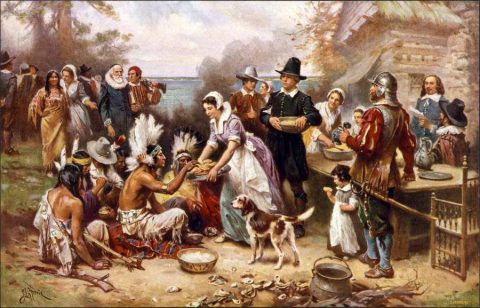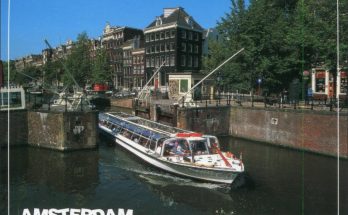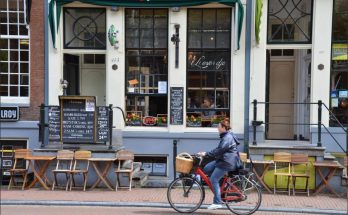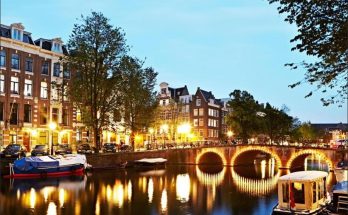The Dutch influence on American history came in three ways. In the first place, refugees from the despotism of the Burgundian and Spanish rulers of the Netherlands and from the religious tyranny of their own people sought shelter in England; they helped to modify the institutions of their adopted home, and some of their children and grandchildren were among the early settlers of New England. In the second place, Englishmen, fleeing from the persecution of English ecclesiastics, found refuge in the Low Countries, where they learned many things besides the Dutch speech, and some of them brought these lessons to Plymouth and to the other colonies of New England.
In the third place, the commercial metropolis of America was founded by Dutchmen whose posterity has powerfully affected the development of the thirteen colonies and of the United States. Few things are harder to unravel or more easy to exaggerate than the interplay of institutional factors, and it is not easy to disentangle the institutions of one people from those of another. This is especially true in the case under consideration, because Dutch and English political ideas come largely from the same source, and the two races under similar environments would ordinarily reach the same conclusion. Until some scientific investigator, expert in early English and American history, shall make a thorough analysis of the institutions of the original thirteen states, it will be impossible to speak with authority on this subject.
For centuries Englishmen and Dutchmen had been close friends. This was due to their racial affinity, to their commercial harmony, and to their similar religious inclinations. No friendship, however long, outlasts divergencies of commercial interest. England and Holland became competitors in manufacturing and in carrying the commerce of the seas; they became rivals in the race for the spoils of the Far East. In 1623, the Dutch captured a few Englishmen who were engaged in trafficking for cloves on the island of Amboyna. The Dutch tortured them, until in the extremity of their agony they confessed to the existence of a fabulous plot to capture the fort on the island.
Then they were massacred, and other Englishmen were driven away. More than a dozen years before this an Englishman, Henry Hudson, sailing in the service of Dutch merchants, had introduced to the notice of the European world the river which still bears his name. He was not the first to visit the Great River of the Mountains; Giovanni da Verrazano, nearly a century before, had anchored within Sandy Hook, and French traders may have frequented the river and perhaps built a trading post not far from the site of the modern Albany; but the recorded history of the river begins with Hudson’s voyage of 1609.
Henry Hudsoncomes into the historian’s notice in 1607, and he disappears in the ice and mist of Hudson Bay in 1611. In this brief period he gained a “farther north” than any other man for many a long year and made two memorable voyages which are commemorated in the names Hudson River and Hudson Bay. His antecedents are unknown, though conjectures have not been wanting; nor is there any certain information as to the reasons for his voyaging in the service of the Dutch East India Company.
Peter Stuyvesant was a crusty, hot-tempered official who had lost a leg in the service of the Dutch West India Company. As governor of Curaçoa, he had displayed great love of show and had badly bungled the only military matter in which he had held important command. He arrived at Fort Amsterdam in May, 1647, and at once declared that in the government of his new people, he should be “as a father over his children.”
As with Kieft in the blush of early enthusiasm, Stuyvesant proceeded to reform abuses–and at Fort Amsterdam there was an abundance of abuses to be reformed. He decreed that in the future no liquor should be sold on Sundays before two o’clock, when there was no preaching, and wine not before four; but this prohibition did not apply to the entertainment of travelers “and of those who are daily customers, fetching their drinks to their own homes.” He further provided that no liquor should be sold to the Indians at any time, nor to whites after the ringing of the “curfew” at nine o’clock in the evening. Ten months later he returned to the subject as these orders, “to the shame and derision” of the director general, were not observed. Existing taprooms might continue for four years, but in the mean time the owners were to engage in “some other honest business.”
They should report daily whether anybody had been hurt or wounded at their houses and must not sell or give brandy, wine, beer, or strong waters to the Indians, directly or by intermediaries. Despite these regulations, the director general continued to observe drunken Indians running about, and he added a threat of corporal punishment to the pecuniary fine. These regulations seem to have been needed, as the little village which clustered around the ramparts of Fort Amsterdam was hardly more than a collection of gin shops and taverns. Drunken Indians and sailors were an everyday sight. Street fighting was also common and was also to come to a speedy end.
One hundred guilders, or six months in prison on bread and water, was Stuyvesant’s cure for drawing a knife in the street and three times the penalty for inflicting a wound. Smuggling and illegal trading were forbidden, and speculators in land on Manhattan Island were to improve their lots at once or forfeit them. William Kieft, who had begun his term of office in an equally virtuous way, had embarked for home, the possessor, it was said, of sixty thousand guilders. The more stringent the regulations, of course, the larger was the fee required for dispensing with them; before long Stuyvesant began buying farms or boweries–to give them their Dutch name. Speedily also the Manhattanese began to dislike the parental quality of the new director’s care of them.
In 1660 the English colonies contained between seventyfive and eighty thousand white inhabitants and New Netherland six or seven thousand more. The settlers occupied a narrow fringe of soil along the coast, the Connecticut and Hudson valleys, and a few places on the Indian trails leading westward from the shores of Massachusetts Bay. They were mainly emigrants from England or their children. In New England there were a few Scots whom Cromwell had sent there after the battles of Dunbar and Worcester, and a small band of Huguenots formed the advanced guard of the later emigration from France.
In the English colonies, also, there were a few Irish laborers who had been sent over from Ireland after the reoccupation of that island by the Puritans; these were most numerous in Maryland. The Scots, the Irish, and the Huguenots were few in number and exerted little influence on the institutions of the English colonies. In New Netherland the Dutch and Swedish settlers lived side by side with an almost equal number of Englishmen; there were also in that colony settlers of other racial origins, but their presence exercised little influence on the social and legal ideas of the dwellers on the banks of the Hudson and the Delaware. The dominant element in the three colonial groups was clearly Germanic.




